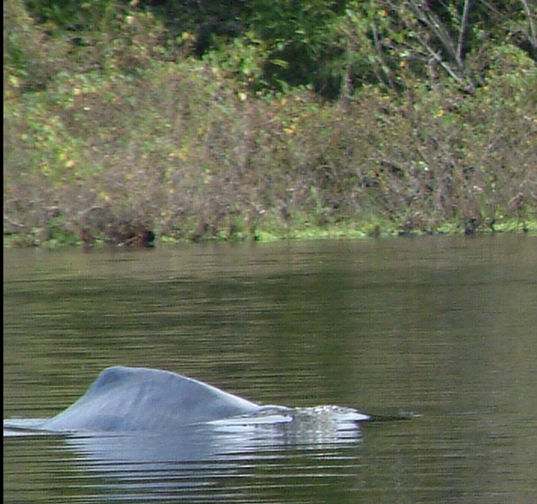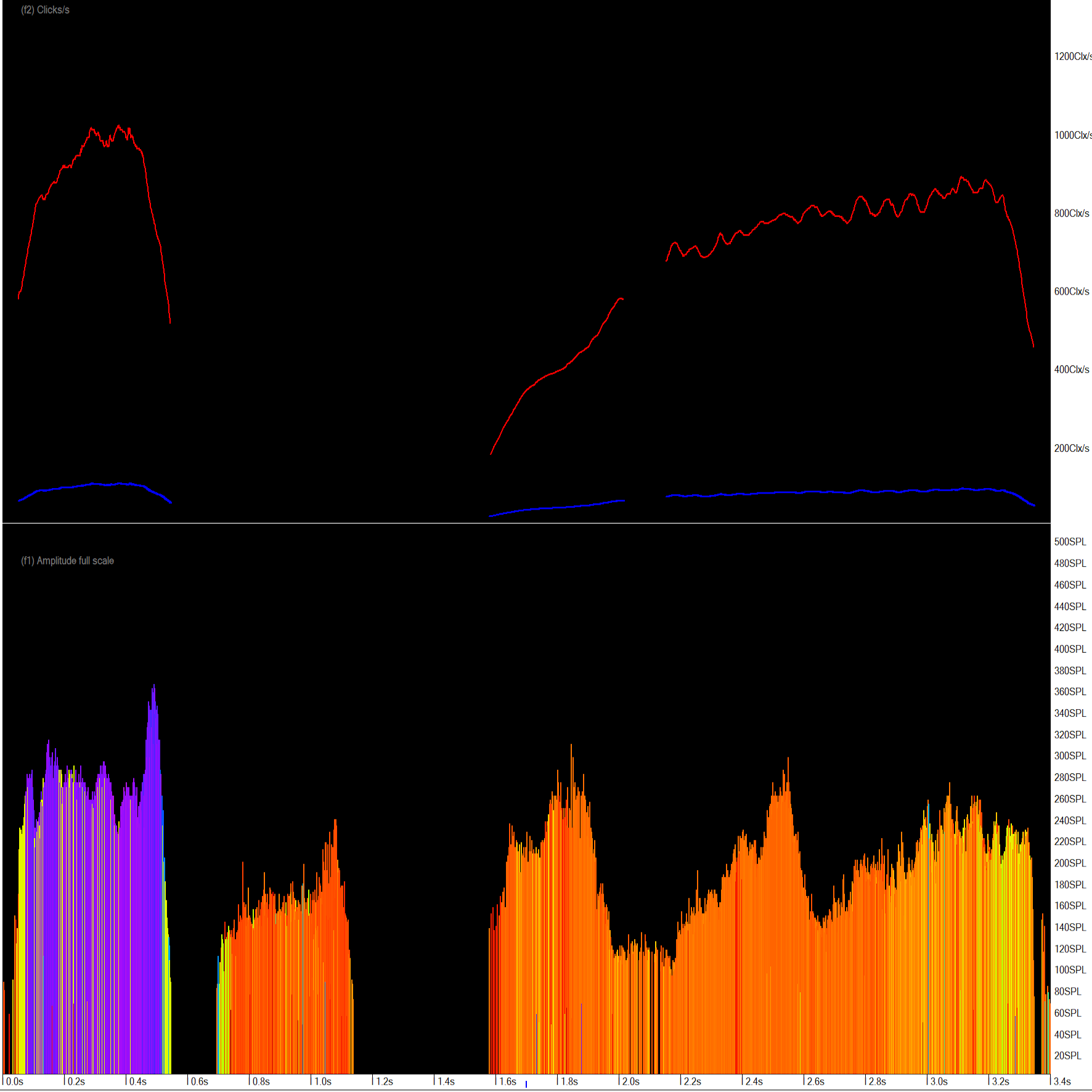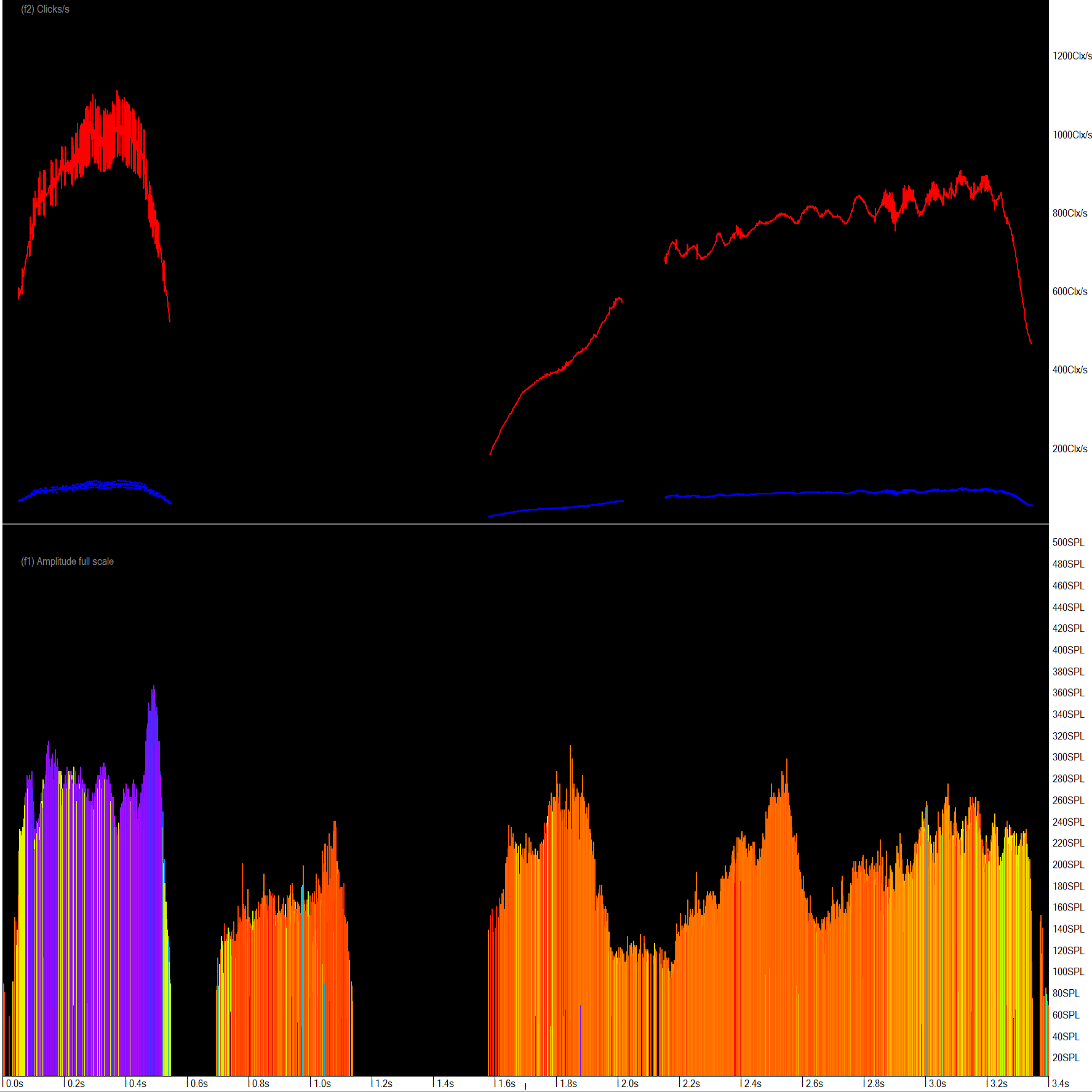
Species discrimination
F-PODs detect all odontocetes – toothed cetaceans – except the Sperm Whale.
This is a Boto (Inia geofrennsis) in the Amazon
It would be very useful to be able to distinguish it from the Tucuxi (Sotalia fluviatilis)
At present, the KERNO-F classifier places trains in ‘NBHF’ (porpoise-like narrow band high frequency clicks), ‘Other cetaceans’, ‘Boat sonars’ or ‘Unclassed’.
Work is proceeding on how to distinguish species in many places where it would be useful.
The information produced by the F-POD on where clicks are within trains and where trains are within encounters is very significant for this.
Third-party access is now available in the F-POD app to full details of clicks, of trains, of encounters, and to the useful features the KERNO-F classifier derives as it proceeds.

Social calls
Most, but not all, dolphins use whistles with distinctive pitch profiles as social calls, and have individual names in the form of whistles.
All toothed cetaceans use click sequences with distinctive click rate profiles as social calls and Narwhals (Monodon monoceros) have individual names in the form of click rate profiles.
The graph shows social calls of a Boto. This species has moved from omni-directional whistles to highly directional click-based communication!
Such fast click bursts have often been called ‘burst pulses’ and are often seen in WAV file data, but the click rate within them is hard to extract so they have not received much attention. Here the click rate was smoothed by the FPOD app.
The F-POD gives instant access to the click rates in these social bursts, and makes it much more feasible to study them.
The amplitude graph is colour coded to show the pitch (kHz) of the constituent clicks.

Smoothed click rates
To facilitate the study of click rate based communication, feeding behaviour etc., the F-POD app now generates smoothed values for the sequences of inter-click intervals in trains.
This image shows the unsmoothed version of the same data as above.
Within data from river dolphins and marine dolphins there clearly distinctive, repeated, conserved click -rate profile elements at 2 or more levels of organisation that can be considered to be words.
If you wish to study this, do get in touch!